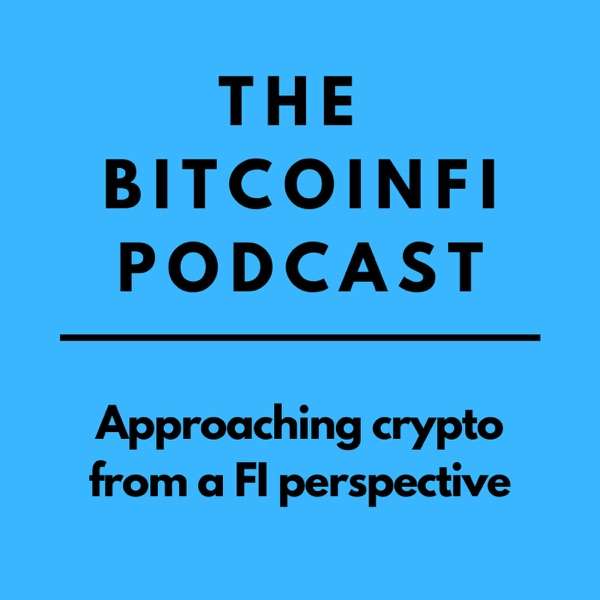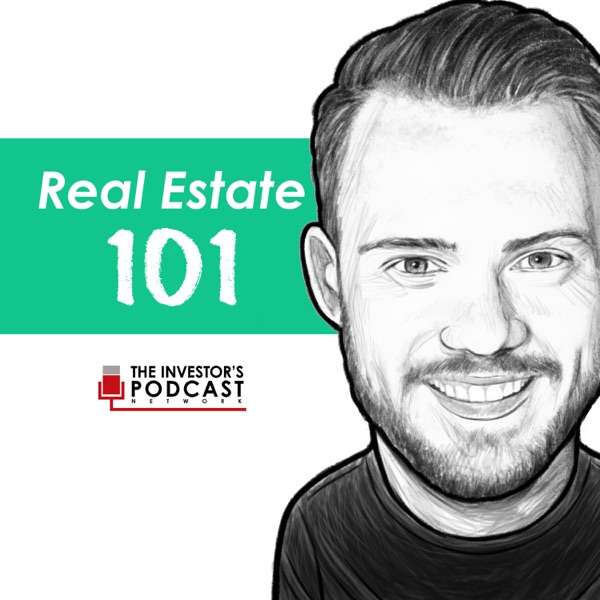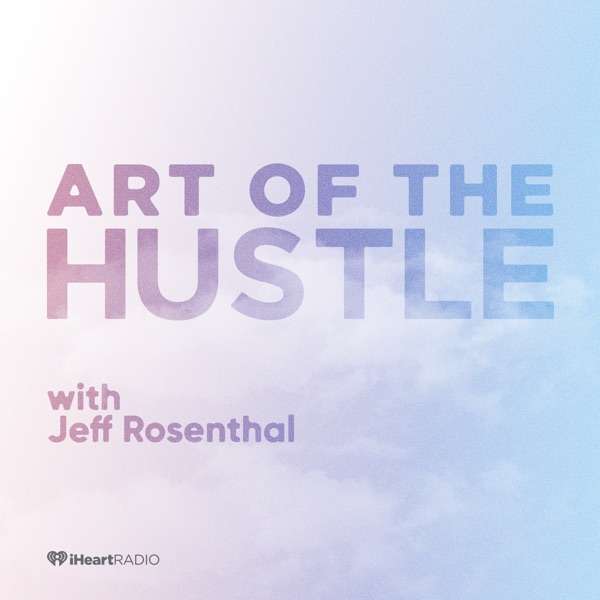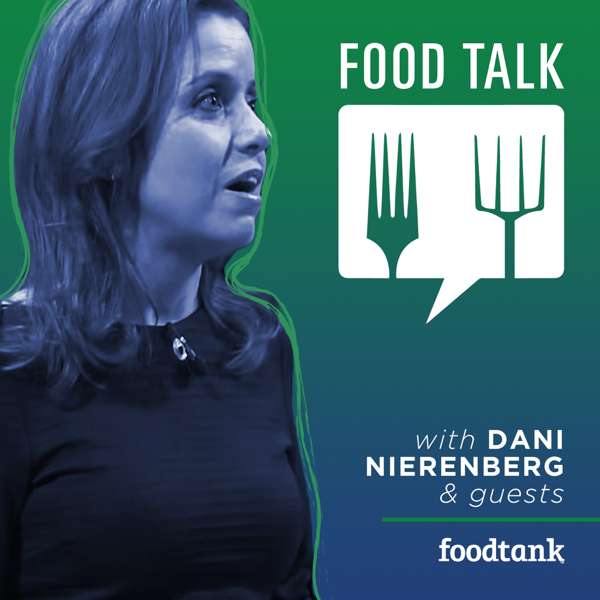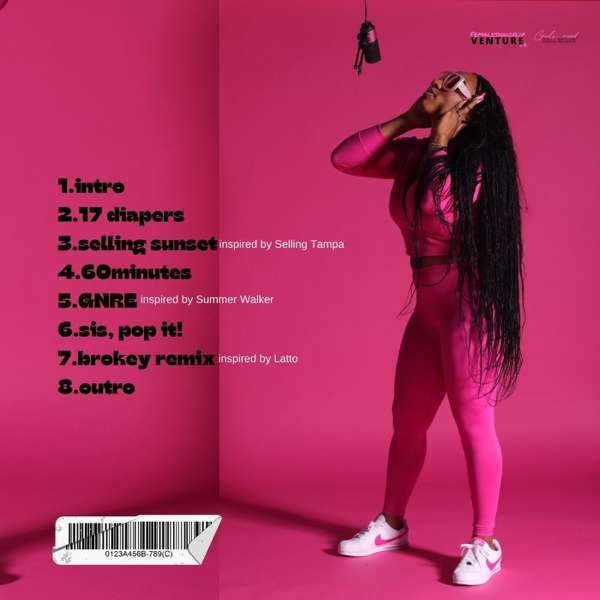Meet 8000 tier UK seller Michael Essek, and learn about expanding beyond Merch, design, driving traffic with Reddit and social media and Michael’s outsourcing plans for 2017. Sign up to get my 5 favorite Merch by Amazon tools & resources today at www.merchentrepreneur.com/tools. Building your Merch by Amazon business? Get free case studies and POD tactics delivered to your inbox at www.merchentrepreneur.com/signup. Join our facebook community at www.facebook.com/groups/merchentrepreneurs.
Elaine: Welcome to the Merch entrepreneur podcast. You’re going to hear these strategies, the tactics, and the stories of people who are making money with Merch by Amazon. Welcome to the Merch entrepreneur podcast. My name is Elaine, and I am delighted to have Michael Essec on the show today, all the way from the UK. Michael, you are very welcome.
Michael: Thank you Elaine, it’s a pleasure to be here.
Elaine: Where abouts in the UK are you, Michael, because you’re probably not a million miles from me here in Ireland?
Michael: No, I’m in Manchester. Just outside Manchester, really. Yeah, we’re probably experiencing similar weather or something. It’s pretty gray here today for me.
Elaine: Oh, very good, yeah. It’s a bit overcast here. It’s not really cold, but it looks a little bit miserable. Definitely staying inside to work on t-shirts. I was just curious actually Michael, you have had a lot of success with working and publishing t-shirts on Merch. What were you doing before you started Merch by Amazon?
Michael: Before I was a graphic designer slash web designer for about six years. I was just building websites really, for small to medium sized businesses. I did graphic design, so I would do posters and leaflets and that kind of thing. Working for a small business in Manchester. I just started doing t-shirts on the side to try and get a bit of side income in, and it just kind of grew from there, really. Just kind of stuck at it, realized the print on demand platforms like Amazon, but obviously when I started, there was Red Bubble and Tee Public, and others. I just kind of stuck at it.
I wish I would’ve gone harder early on and done a lot more designs, and I could be retired by now. It just kind of grew and snowballed, so happy to be where I am now.
Elaine: Sounds great. I’m curious, when did you start Merch and what tier are you on currently?
Michael: Just about a few weeks after it launched, I think. October last year, and I’m currently on the 8,000 tier.
Elaine: Wow, that’s really amazing. 8,000, that’s one of the top guys on Merch. That’s really cool. You’ve had experience before designing t-shirts. How much time everyday do you spend on Merch? Do you do the designs yourself, or how does it work?
Michael: I do most, 99% of the designs myself. I would say that the past few weeks, I’ve really kind of … Not stopped designing, but I’ve really slowed down. I’ve kind of got other things on the boiling around Christmas time, things are just busy. Thankfully Christmas has kind of picked up the slack there and driven the sales quite high. Most of the time, kind of on a usual … If you go back a month or two ago, I would’ve been trying to set myself targets every day. Some days it would’ve been maybe five designs, other days it might’ve been ten.
It really varies for me. I’ve not really done quantity. I only have something like, after the purge of designs, I have about 600 designs now in my main account. Not a lot of designs really, compared to some of the big guys. Because I’m a one man band and I’ve not really outsourced stuff. My quantity isn’t that high, and I tend to just try and do designs that I think I know something about, and that I have some knowledge on. Topics and ideas and markets that I’ve been able to do well in in the past. Things that I can design myself.
I don’t go for volume. I kind of go a bit more focused on a few areas and topics. That means that day to day, I might not have an idea that I feel I want to work on. Other days I might wake up and really want to go at two or three designs and get them done. It’s a bit more quality of quantity. I’m thinking next year is maybe going to be a bit different, and I probably do need to up my production. Whether that’s me working harder, or outsourcing it to someone else, or a few people. I think that’s probably the future for next year
Elaine: Oh, wow. That’s incredible. I didn’t realize you had so few designs up. 600 designs for 8,000 tier is crazy. Those designs, I’m actually really curious. You were saying that you also publish on other platforms, so do you choose what designs to publish on merch based on success you’ve seen in other platforms, or do you do like, current trends or seasonal stuff? Would you have kind of an idea of how that would work?
Michael: It kind of varies. I’ve had a lot of success with trends and things that blew up. Whether that was some political thing or I don’t know, a political joke or some kind of internet joke that was doing the rounds or something. I’ve had a few of those over the course of the past year, that really blew up. They maybe generated a lot of sales in a short space of time, and then they would take over and kind of keep bringing in steady sales for the rest of the year.
Yeah, a few kind of big hitters like that. Then, just a lot of what I would call long tail things. You just asked me, is it things that I’ve seen success on? It is, usually. If I see that there’s a couple of designs that are gaining traction, then I’ll revisit that and I’ll do some similar designs, or see how I can put a twist on it or something like that. Yeah, generally it’s just kind of a case of sitting down and thinking, or just going about daily life and having an idea and jotting it down.
I keep a big list of ideas, and then I kind of review those ideas on an ongoing basis, and scratch that one. That’s no good. This one is good, that’s worth pursuing. Then doing research online to see whether people are already doing these kind of designs, or what kind of concepts and ideas or jokes or comments are made around these designs? That kind of thing, really. Just to keep it current and keep it moving forward. Keep the production up, really. That’s all the key is. I would say the main thing is to just keep on producing. Once you’ve got something out there and you can see if it sells or not, then you’ve got so much more valuable information to make decisions on what you should design for next.
Elaine: Actually, yeah. That’s a really good point. I’ve done a bit of the, take my time and do really nice designs, but I’ve also done a bit of the other kind of just do a ton of stuff and throw it up. Like you said, definitely, a good few of them won’t actually stick and after the 60 days they get taken down, but you’ll definitely get ones that surprise you that actually sell really well. You’re like, really? Like you said, that’s completely invaluable information. Then you can double down or do more in that niche or whatever.
Michael: Yeah. There’s different ways and approaches to doing Merch. You’ve had [inaudible 00:07:35] on your podcast, and that’s someone who’s gone big on volume and it’s paid off. I can see how well he’s doing. I think there is some truth to quality over quantity. I think if you just did quantity, if you just did as many designs as you could, you’d probably get better results than someone who’s just doing quality. It’s so hard to predict what people are going to like. It’s very hard to judge that, and it’s hard to see the future, really.
Whereas if you’re just doing a lot of designs. As long as you’re not doing the same kind of designs all the time, you’re probably going to hit something sooner or later and if you can keep the production up, then over time that’s just going to … It’s like saving in the bank. If you keep putting money in the back, or even better, putting it into the stock market or something like that. Over time, if the stock markets going up, you’re going to win. Merch is a platform that’s going up, so the more you put into it, the better results you’ll see at the end of it.
Elaine: Yeah, I completely agree. I was curious actually, because you’ve sold at least over 4,000 t-shirts to be at the 8,000 tier. Did you have a strategy of pricing low to sell so many t-shirts, or do you think it actually works out better to price higher? I know people come at that with kind of different angles.
Michael: Pricing is one of those things that, for me I’ve always wanted … I see myself as kind of a designer, first and foremost. I want to price my stuff at a decent price that reflects the quality, because I think it’s worth that. That’s not necessarily the best way to do things, because the market ultimately decides what your work is worth. If people don’t like it, they won’t buy it. If they do like it, then they will buy it at a certain price, and you price too high, you price yourself out of the market, really.
I’ve done a lot of experiments and I’ve priced at various different places. I would say that my standard price is between 20 dollars and 25 dollar mark. I think my prices have come down over the course of the year. I don’t know, I think it’s a case of really what you want to achieve and how willing you are to lower your prices to get sales, really. To me, what I’m looking at is the amount of royalties I get. I don’t care really what my sales number are. All that matters is the bottom line, what am I making?
I always want to price a product where it makes sense. I’ve found that usually is around the 20 dollars mark. I’ll sometimes come a bit lower if I feel that it’s a high competition phrase and I’m going to benefit from the volume of sales increase that I might get from lowering by a dollar or two. This is one of the things on merch. It’s becoming a bit more intensive, where it might be worth your while checking the niches and the markets that you’re in, and trying to change the prices here and there and lower them by a few dollars. Then next week, raise them up again. Even go really, really low in order to try and get the number on spot on a certain phrase, then slowly raising that price.
I’ve had some success with those tactics, but there’s not really one way that works across the board. It’s kind of a case of, what’s your goal? Obviously if you’re a new seller, you want to just get as many sales, actual sales as possible. You can lower your price, really low, because that’s all you want is sales so that you can tier up and get to a higher tier. Then if you’re on the higher tiers, obviously now you want to maximize your profits. You want to get the most out of the designs you’ve got. Usually that means for me, higher pricing, not competing on price. I would put it that way.
Elaine: Okay. That makes a lot of sense, all right. You were saying earlier that I think you do most of the work yourself, the designing work yourself. I’m just curious actually, what software do you use? Are you using Photoshop or Illustrator or something along those lines?
Michael: Yeah, I’m using Photoshop and Illustrator, kind of in tandem. Most of the time I will work almost exclusively in Photoshop. If I’m doing some kind of artwork or something I might use Illustrator. Yeah. Those are my standard things. I’ve not really played around with any of the software, because I’ve used Photoshop and Illustrator professionally for the past ten years or something. I’m just used to those platforms. Other people use other things, whatever works for them. Right now for me, I’m sticking with Photoshop for now.
Elaine: If you could attribute one particular reason to the really strong growth that you’ve seen on the Merch platform, what would that be?
Michael: I think the volume thing is undeniable. If you’ve not got a lot of designs, it’s going to be really hard to make sustainable income from Merch. I know that can be difficult when you’re a one man band and you’re trying to do quality designs, and that kind of thing. How do you get the volume up? I was fortunate that I was able to basically quit my full time job and do this full time this year. That allowed me to just kind of put my foot down and do as many designs as I could.
I think without that volume it’s really hard. You will get designs that blow up for a few days. I’ve had things that came out of no where. Actually had one earlier this week that blew up on Instagram. I didn’t really prepare for that, I didn’t cause it to happen and it just kind of blew up. That will happen. Those things are great. If you want to get the sustainable income, you need to be producing more designs. You need to be constantly producing designs, and you need to realize that you’re not going to reach certain levels of income until you’ve got a certain level of designs, a certain amount of designs.
Say you’ve got that amount of designs in your inventory, you won’t be getting the sales volume. Once you do hit it, you just kind of keep on feeding it. You should keep things going. I think definitely volume is important. Quality and research and kind of doing a bit of … It doesn’t need to be really in depth, and you don’t need to spend hours on this, but even just a cursory glance on Amazon to see what the competition is. To see where little opportunities are, and to follow little rabbit trails. I think that is valuable. Rather than just throwing up ideas that have come from the top of your head, or something like that.
If you’re producing designs that already exist, either within Merch or already on Amazon, it’s hard to then pick up sales. There’s lots of t-shirt sellers on Amazon apart from Merch. They’re able to offer prices that are sometimes a lot lower than Merch. If you’re creating a design, you see a design, you think, oh, these guys are selling well. It’s not Merch or whatever. I’m going to create a design. You might found out that that guy’s selling well because he’s selling at ten dollars. You can’t even sell that low. Your designs just not going to sell because this guys got one that’s selling for a few dollars cheaper than you can even really charge.
It’s things like that. Quickly checking what the market is like, and paying attention to that. Not just throwing things up there. Yeah, quality work that you’ve done a bit of research on, plus volume. Plus time, I think is success with Merch. It’s not a platform for everybody. If you can’t produce designs yourself, or you can’t afford to outsource them, then it’s not really an attractive platform for you. If you are a designer, and you can produce a lot of designs and you have time. It doesn’t happen over night, but if you can just produce a steady stream of designs, then starting from zero, this time next year you could be looking at multiple thousands of income next Christmas.
With a growing platform, there’s lot of opportunities. I think if you can just kind of go in eyes open, and be prepared to do the work and be prepared to wait, and that kind of thing, then there’s lots of growth in merch, and in print on demand t-shirts in general.
Elaine: Very interesting. You mentioned there that one of your t-shirts recently blew up on Instagram. I was curious, do you drive any traffic to Merch? Do you have Pinterest of Instagram or Twitter accounts you use to put t-shirts up, or do you use any paid advertising either?
Michael: Yeah, I find a lot of success on Reddit, for promoting t-shirts and stuff. I have an Instagram account. I don’t really use that as much as I probably should. I have basically a couple of t-shirts brands that I started about this time last year. One I started about this time last year, ones maybe a couple of years older. These are brands that have a almost unifying … I don’t know what you call it. Kind of a theme, kind of a niche, that they’re appealing to. One of those, I kept at it for a good year and built up a following and did Instagram posts daily, that kind of thing. That did really well.
I’ve just slipped from doing the regular updates on that, but those kind of tools are helpful. I’m relying on Amazon to bring the traffic for Merch, but outside of Merch, I’ve had success with Instagram. I’ve had a lot of success with Reddit. I don’t use Pinterest. Don’t find much success with Twitter apart from as a research tool. I find Twitter very useful. To give me ideas and that kind of thing, Twitter is quite handy. Apart from that, not really done much promotion with Facebook. I’ve tried Facebook advertising, but not quite cracked it yet. Those are the kind of tools I’ve used.
Elaine: That’s really interesting. I haven’t heard too many people using Reddit to drive traffic. Is it just a case of, if you have a t-shirt you think would appeal to a specific audience or something that’s trending, you just copy the link into a Reddit niche that’s related to the topic? Is that how it would work?
Michael: Yeah. There’s a couple of approaches. Definitely the sub Reddits, is what they’re called. Kind of like little niche communities within Reddit, is a great way to get eyeballs and traffic and sales. It’s not something that … Reddit kind of has a policy against spam and self promotion, so it’s something you need to be very careful with. If you overdo it, then you’ll get banned from Reddit. Reputation is quite important on Reddit. People kind of check you out. They want to know, who is this guy, where’s he come from, how long has he had his account? What kind of stuff does he post?
People can view your Reddit history. Anyone can do that. If they see, oh this guy just goes into various sub Reddits and just posts t-shirts all the time, then they’re going to be like, well this guy’s a spammer. You’re just going to get a bad reputation. I’ve burned through some Reddit accounts in the past. Made mistakes on that way. Really, I would say it’s kind of … If you can find a community that you’re interested in in the first place, and you kind of have some affinity with, then you can just kind of hang out there just like you would as a normal human being, and interact and maybe post cool and interesting stuff. Then every now and again, you can drop in, oh guys, I just did this design. What do you think? Something like that. I’ve had success that way.
I’ve also been able to a couple of times get something on the front page, just by doing … I say just by doing, but this is very rare and we would say flukey. It doesn’t happen very often. If you can get kind of a generic, funny design, something that isn’t specific to a particular niche or something but is kind of, it’s just a funny, almost … Most of my designs are kind of pop culture cartoony type, funny stuff. If you can get something like that, and it just takes hold within Reddit and blows up, then obviously that’s fantastic. It’s hard to do, and it’s not predictable. I’ve found that even if I just kind of try and do something like that once a week, it doesn’t come across too spammy. Sooner or later, something will take off.
It takes a lot of time. It’s certainly not an effective, economic way of getting sales. When it does work, it’s great. It’s just kind of fun. I’m on Reddit anyway because I like Reddit. I like the communities. I get ideas from Reddit, and those kind of things. It is a useful tool, if you can spend the time there.
Elaine: Michael, you have mentioned a little earlier that you also publish on different print on demand platforms. I was just wondering if there were any other t-shirt platforms or platforms that sell things other than t-shirts, that you would recommend that people who are currently doing Merch, that it would be a good thing to go and investigate and maybe make some additional sales.
Michael: Yeah, absolutely. The next one down from Merch is Red Bubble, which is one that does very well for me. It’s really easy to add designs, and they sell on all kinds of different products. Not just t-shirts. You’ve got all kinds of different clothes. Hoodies. They even do dresses now, stuff like that. You can get phone cases and clocks they’ve started doing. Yeah, it’s a great place to add designs. Simple to upload. A bit time consuming, compared to Merch because you kind of have to position your artwork and add background colors and that kind of thing.
If you’re willing to do that extra bit of work, I found Red Bubble to be a nice earner. Of course, it’s exactly the same as Merch. It’s passive income. It’s organic, the traffic is organic. I don’t need to pay for traffic. They do retargeting, so they will chase customers around the web on your behalf, trying to sell them your designs, which is great. Red Bubble is a great one.
Tee Public is another one I use. I’ve seen it kind of decline a little bit in the past few months, but it’s still, a decent chunk of income comes from Tee Public. The other big one for me is Etsy. I sell on Etsy, and I use a t-shirt for film and company to actually fulfill the orders. Customers are buying directly from me and my brand, and I’m using a third party to print and ship the t-shirts too them. That’s really done great for me this Christmas. I find Etsy to be similar kind of market to Amazon, in a way. It’s a like a mini version of Amazon in a way.
Elaine: Very good. That’s really interesting. The last week or ten days, we’ve seen a lot of changes in Amazon. As I record this, hopefully Amazon … Well, they’ve already started to let people back in and upload t-shirts. I think the last ten days is a really good wake up call for people just to realize that while Merch is great, that definitely it’s a wise business decision just to look at other platforms as well. Spread out the risk a little bit. Listen, Michael, it’s been an absolutely pleasure to have you on the show. If people want to learn more about you, where is the best place for them to find you?
Michael: They can find me at MichaelEssec.com, and on Twitter Michael Essec. Facebook, same again. Yeah, they can subscribe to my newsletter. I have a weekly newsletter that goes out with tips and tricks for selling t-shirts. I also just kind of share my thoughts on a weekly basis as to what’s happening, so this past week, I wrote a bit about merch and all the kind of changes that are happening there. Yeah, definitely if you want to sell more t-shirts, if you want to learn kind of how I’m doing it and what my thinking is, then go ahead and subscribe there.
Elaine: Michael, that’s fantastic. Thank you once again for coming on the show. It’s been a joy to have you, and looking forward to seeing your continued success in 2017.
Michael: Thank you Elaine, same to you, and same to everyone listening.
Elaine: If you want to learn about how to start a Merch by Amazon business, you can go to our website, Merchentrepreneur.com. There you can get the top four tools and resources you need to grow your Merch by Amazon business. If you’d like to join our online community, all you have to do is go to Facebook and type in Merch Entrepreneur.
Thanks so much for joining us this week. If you enjoyed this episode, press the SUBSCRIBE button on your iPhone and automatically get each new episode when it is released. Have some feedback you’d like to share? Leave us a review on iTunes!
The post Expanding beyond Merch, driving traffic with Reddit and social media and plans for 2017 with UK seller Michael Essek appeared first on Sweet Funnel Strategy Podcast.

 Our TOPPODCAST Picks
Our TOPPODCAST Picks  Stay Connected
Stay Connected



 1. Retargeting ads. These are the first type ads I set up. The idea is that anyone who visits your sales page, then sees ads for your product for the next 7-14 days.
1. Retargeting ads. These are the first type ads I set up. The idea is that anyone who visits your sales page, then sees ads for your product for the next 7-14 days.  The cost of retargeting ads is low – maybe 10-300 people see your sales page each day. They could be from organic traffic from social media, a podcast, youtube videos. They could be after you sent an email to your email list. It’s not going to be a huge amount of people. However – if they have already VISITED your sales page – they are a very hot audience & quite likely to buy.
The cost of retargeting ads is low – maybe 10-300 people see your sales page each day. They could be from organic traffic from social media, a podcast, youtube videos. They could be after you sent an email to your email list. It’s not going to be a huge amount of people. However – if they have already VISITED your sales page – they are a very hot audience & quite likely to buy. If you have an existing audience I would use:
If you have an existing audience I would use: How do I set these ads up in Facebook?
How do I set these ads up in Facebook?
